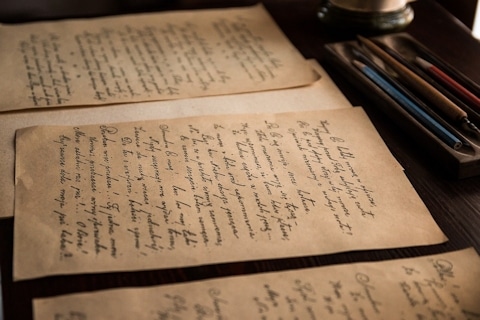- More than 35,000 historic photos of Vallejo and Mare Island.
- Complete archives of original bound volumes of Vallejo newspapers from 1867 to 1950.
- Complete set of the Mare Island Grapevine newspaper from 1942-1996.
- City of Vallejo official records including tax assessment roles back to 1870 and minutes of City Council and City trustees meetings back to 1892.
- The original hand written prescription book used by Dr. Platon Vallejo. Dr. Vallejo was a son of General Mariano G. Vallejo and was also the first native-born Californian to become a licensed physician.
- Archives of the Vallejo Housing Authority, Vallejo Police Department, Chamber of Commerce, Greater Vallejo Recreation District, VFW, Vallejo Rotary, and many other city departments, community organizations, businesses and local families.
- The complete artifact, archive and photo collection of the USS San Francisco Association. USS San Francisco was built at Mare Island and was one of the most highly decorated and illustrious ships in US Navy history. This collection includes a Congressional Medal of Honor awarded posthumously to crew member Reinhardt Keppler, one of only a handful of Medals of Honor on public exhibit in any museum in the United States.
- The complete formal wardroom silver service of the Mare Island-built nuclear submarine USS Mariano G. Vallejo.
- Stone mortars, obsidian spearpoints, fishing net weights, and other material reflecting the lives of the region’s original Native American inhabitants.
- A large collection of sailor’s “folk art” including silk embroidery, elaborate woven rope work, hand built ship models, metal work, ships-in-bottles, etc.
- More than 3,000 historic textiles.
- Paintings, drawings, prints, sculpture and other works created by California artists since the 19th century, including works by Maynard Dixon, Dong Kingman, and Dirk Van Erp.
- Oral history collection.
- A Russian cannon brought to Mare Island from Sitka, Alaska. The cannon was given to a Mare Island physician who accompanied the US delegation that traveled to Alaska to take possession of the territory in 1867. The cannon was a gift to the surgeon in recognition of the treatment he had given to Russian sailors killed or injured in a fire in San Francisco in 1862. Several of those Russian sailors are buried at Mare Island.
- “Miniaturized” Styrofoam cups crushed by tremendous ocean pressure during record-breaking deep submersible dives in the Pacific Ocean.
- Rare surviving artifacts, documents, and photographs from Vallejo’s historic Carnegie Library – an architectural gem demolished nearly 40 years ago.
- Household furnishings and other items spanning the pre-Gold Rush era to the present, reflecting the daily lives of ordinary Vallejoans.
- A woman’s handbag woven in a style known as “sennit” work (a traditional sailor’s art). The purse was created by German sailors interned at Mare Island during WWI. The purse was given to a young child Vaudeville star named Alice Luthy Smith (a.k.a. “Baby Alice”) who had entertained the prisoners. U.S. Navy authorities confiscated the purse before it could be given to “Baby Alice” because they thought that the elaborate woven design might contain a secret enemy code.

